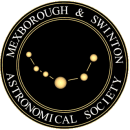“Near-Earth Objects: Origins, Impacts and Riskâ€.
Guest Speaker
Thursday, 21st October 2021 (19:45 - 21:00)
Venue: Virtual Meeting
Comets, cometary debris and rocky material from the main asteroid belt may occasionally collide with Earth with attendant catastrophic effects.  The largest impacts, which occur very rarely, may produce mass extinctions of life on Earth. Â
Smaller impacts occur more frequently and with effects of concern for civilization.  This talk introduces so-called `Near-Earth Objects' (NEOs), which are principally comets and asteroids and their disintegration products that happen to have Earth-crossing orbits.  It then describes how risks of various extremely rare but high-consequence events can be compared.  The comparison, highlighted on the one hand by the canonical 10-km diameter asteroid thought to have destroyed the dinosaurs and on the other by the famous Tunguska event in Siberia on 30th June 1908, shows that the risk posed by NEOs has implications for the long-term survival of civilization.  With survival of life on Earth at stake, the risk is potentially unbounded.
 The NEO impact hazard is unique: unbounded, predictable and potentially avoidable.  But mitigation requires a space-borne asteroid-deflection technology that, in the wrong hands, might be turned back on Earth.  Is humanity wise enough to control such a powerful technology or should we, in the present uncertain world, accept the risk of living in a cosmic shooting gallery without defence?
Speaker: Mark Bailey
Mark Bailey MRIA served as Director of Armagh Observatory from 1995 to 2016 and has research interests ranging from small bodies of the solar system to extragalactic astronomy, including aspects of local history and the history of astronomy.
Minor planet (4050) was named "Mebailey" for his work on the origin of comets and he was awarded an MBE for services to astronomy in 2007.
